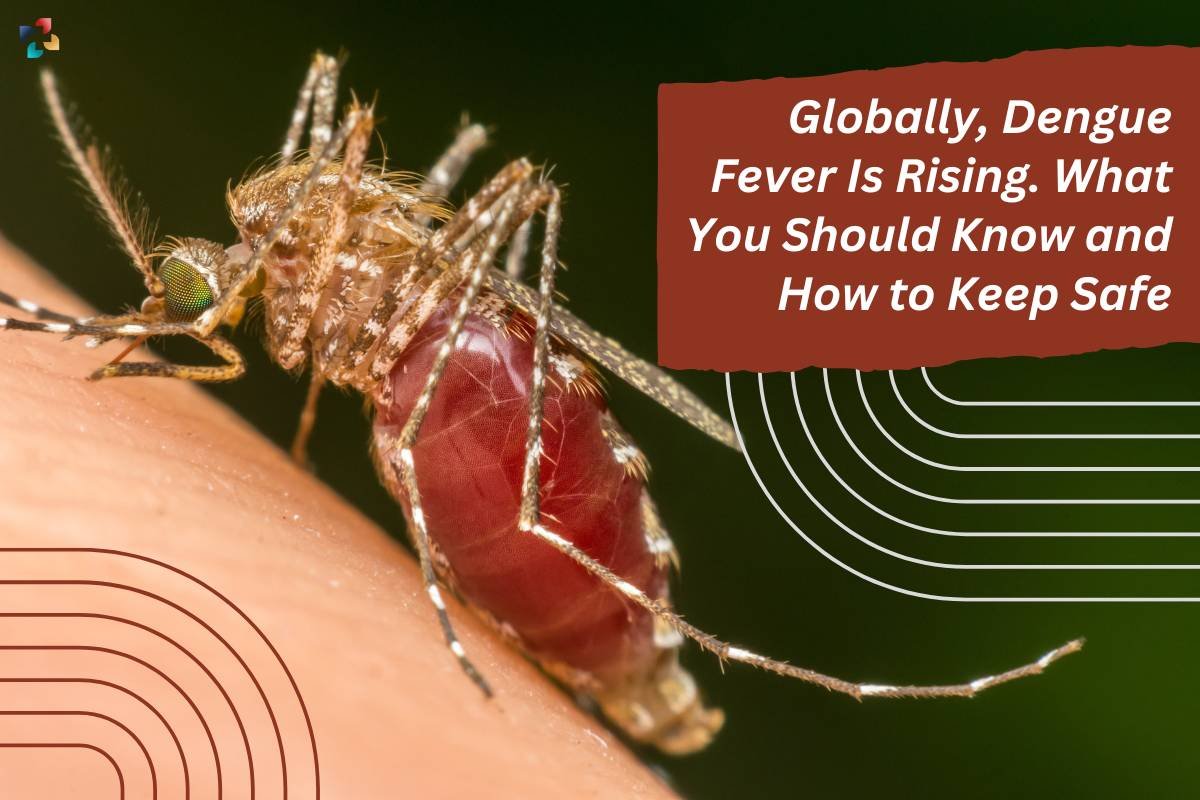Alarms are being raised by governments and public health specialists worldwide regarding the unprecedented proliferation of dengue, one of the most infamous and fatal diseases that nearly half of humanity is susceptible to contracting.
Although the mosquito-borne virus has a lengthy history in warm climates, it is currently making an appearance in areas previously unknown to it, like parts of the United States and Europe. Over five million dengue infections had been reported globally by early December, a sharp rise from the roughly 500,000 cases that were reported in 2000 in at least 80 nations and territories. Over 5,500 individuals have lost their lives in 2023, as reported by Save the Children.
California reported the first instance of locally transmitted dengue virus in October. For the first time ever, dengue was discovered in Sudan’s capital, Khartoum, in March, severely taxing the already impoverished healthcare system.
Meanwhile, dengue has spread at a never-before-seen rate this year in nations where the virus was previously common. Dengue cases were reported in all 64 districts of Bangladesh during the greatest outbreak in the country’s history; by mid-November, the disease had killed 1,476 people and infected 291,832 people. The health minister of Peru resigned in June as the number of illnesses and fatalities from the dengue outbreak continued to rise. In June, the minister had proclaimed a state of emergency in most of the country.
“Lack of robust dengue surveillance and management systems raises concerns about potential undetected cases or unrecorded travel movements that could contribute to unnoticed disease spread,” according to a risk assessment analysis released by the Pan-American Health Organisation on Tuesday.
Dengue does not yet have an antiviral treatment, however medication can normally be used to manage the symptoms. Here are some things to know about the illness and how to stay safe.
What signs of fever do you get with dengue?
This infections can cause a wide range of symptoms in their victims: up to 80% of cases are asymptomatic, and while some infections may simply cause flu-like symptoms, more serious instances can result in internal bleeding that may be fatal.
High fever, nausea, vomiting, and excruciating joint and muscle pain are some of the most typical signs and symptoms of dengue infections; the latter is what gave rise to the term “breakbone fever.”
The fatality rate from dengue is less than 1% when the disease is discovered early and treatment is readily available; but, in cases of severe dengue, that number can increase to 2-5%. However, dengue might have a 20% fatality rate if treatment is not received.
Why is dengue becoming more common and how does it spread?
The common way that dengue is transmitted is by bites from infected female Aedes aegypti (Egyptian tiger) mosquitoes, which breed in stagnant water. In rare instances, the illness can also be passed from pregnant women to their unborn children through organ transplants, blood transfusions, or needle injuries.
The COVID pandemic has led to a renaissance of international travel, which has contributed to an increase in the disease that has long been a public health concern in Asia and Latin America. El Niño, a weather phenomenon this year that raises temperatures, is also thought to have made this outbreaks in tropical nations worse.
Experts are growing more concerned about the threat that dengue poses to the southern sections of the United States and Europe as well as new areas in Africa, as rising global temperatures brought about by climate change have made more areas of the world conducive for Aedes aegypti mosquitoes to spawn.
Additionally, studies have noted how urbanisation affects the spread of dengue.
In addition to merely raising the population density, the growth of unofficial urban settlements without plumbing connections has made exposed litter and stagnant stored water ideal breeding and feeding grounds for Aedes aegypti mosquitoes, which are already acclimated to urban settings.
Healthcare systems worldwide are being put to the test in previously unheard-of ways as a result of the record-breaking rise in dengue cases; some are collapsing under the weight of the demand, while experts express alarm about the human costs of inadequate government responses to the outbreak. Anger and fear among the populace are also growing; in September, Indian opposition party members protested in public in Kolkata, critiquing the government’s handling of the dengue outbreak.
What steps are governments taking globally to fight dengue?
Throughout the world, fumigation is still one of the oldest and most popular ways to eliminate mosquitoes. But the efficacy of fogging mosquitoes is declining. Researchers warn that after decades of chemical control, this outbreaks have become more severe due to mosquitoes being resistant to chemical agents.
Currently being tried in more than a dozen countries, an innovative initiative headed by the World Mosquito Programme seeks to combat mosquito-borne illnesses by using insects themselves. As part of the programme, the government releases mosquitoes that are specifically engineered to carry the bacteria Wolbachia, which prevents the spread of viruses that cause dengue, zika, and yellow fever.
Not everyone, though, is in favour of the bold proposal. Both experts and locals fiercely opposed the plan when Indonesian authorities announced the release of 200 million Wolbachia-carrying mosquitoes in Bali. They were concerned that Bali residents would be turned into “lab rats” and had little faith in the findings of a small-scale pilot study conducted in another Indonesian city.
Environmental agency staff regularly inspect residences and other locations in Singapore, where the Wolbachia research is underway, to look for possible mosquito breeding grounds and to gather water samples for laboratory testing. If it is discovered that a property is used for mosquito breeding, the owner faces fines or perhaps jail time.
Singapore monitors the emergence of dengue clusters within the city-state. Boston Children’s Hospital oversees a similar programme to monitor media reports of cases worldwide. Additionally, London researchers announced earlier this month the creation of the world’s first “dengue dashboard,” which will model and forecast the disease’s global spread and is anticipated to go live in the coming year.
“Local strategies to combat dengue—at the village and city level—and with the participation of communities,” stated Save the Children health advisor Yasir Arafat in a statement highlighting the risk of infections this year. “In order to manage risk rather than just crisis, funding needs to better anticipate unexpected weather and climate shocks.”
What defences are there against dengue?
Governments from all around the world have been exchanging best practices to stop the spread of dengue, as scientists predict the disease will eventually make its way to areas that have never seen it. These include applying insect repellent, covering windows and doors with bug screens, dressing in long sleeves and long trousers and routinely checking your house for standing water.
The World Health Organisation recommends Qdenga for children aged six to sixteen or those residing in areas with a high risk of this transmission, and the U.S. Centres for Disease Control and Prevention recommend Dengvaxia for children aged nine to sixteen who have previously contracted dengue. These are the two dengue vaccines that are currently commercially available. (However, it was discovered that the world’s first dengue vaccination programme, started in the Philippines in 2016, made recipients of Dengvaxia more susceptible to severe infections, which reduced public confidence in all vaccinations in the nation.)
The World Health Organisation advises people who have contracted dengue to stay hydrated, get enough sleep, avoid taking aspirin or non-steroidal anti-inflammatory medicines (NSAIDs) in favour of paracetamol for pain relief, and see a doctor if they have severe symptoms.
Also Read: Your Summer Safety Shopping List: Keeping Fun in the Sun







